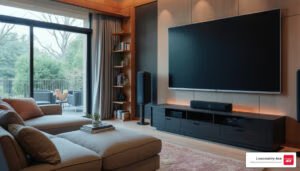Glass Cutting Cost: Top Factors & Prices in 2025
Glass cutting cost can vary based on several factors, and understanding these can help you make informed choices about your DIY or professional projects. For those just seeking quick information, the cost of glass cutting typically ranges from $5-$7 per square foot for standard services, and can surge to $20-$200 per square foot when customization is involved.
Several key factors influence the price, including:
- Glass Type: Different types of glass like tempered, laminated, or frosted glass have different costs.
- Customization: Unique shapes or sizes can increase the cost.
- Edgework and Finish: Polished edges or special finishes can add to the overall price.
- Thickness: Thicker glass can be more expensive and difficult to cut.
As you steer decisions about glass types and cutting methods, staying informed ensures you receive both quality and value.
The helpful team at Lowcountry Ace is ready to guide you through glass cutting costs and tailor services to fit your needs.
Understanding Glass Cutting Costs
When it comes to glass cutting cost, several factors can significantly influence the price. Let’s explore these elements to give you a clearer picture of what to expect.
Customization
Customization is a major driver of cost. If you’re looking for unique shapes—like circular, hexagonal, or trapezoidal—expect to pay more. Custom designs require precise cutting and often involve additional labor and tools. The more intricate the design, the higher the cost.
Thickness
The thickness of the glass is another crucial factor. Thicker glass, such as 3/8″ or 1/2″, is not only more challenging to cut but also more expensive. Thicker glass is often used for heavy, unsupported tabletops, and its durability comes with a price. Here’s a quick reference for common glass thicknesses:
| Thickness | Usage |
|---|---|
| 1/8″ (3mm) | Light table covers |
| 1/4″ (6mm) | Glass tabletops |
| 1/2″ (12mm) | Heavy, unsupported tables |
Complexity
The complexity of the project also affects the cost. Projects requiring precision cuts, such as cutting holes or intricate patterns, demand specialized equipment and expertise. This complexity translates into higher labor costs and potentially longer processing times.
Edgework
Edgework and finishing can add a significant amount to your glass cutting cost. Options like polished edges or corner dubbing improve the glass’s appearance but require extra labor. These services are often necessary to ensure a clean, safe finish, especially for pieces that will be handled frequently.
In conclusion, understanding these factors can help you anticipate the costs associated with your glass cutting project. The helpful team at Lowcountry Ace is ready to assist with expert advice and precise cutting services custom to your needs.
Types of Glass and Their Impact on Cost
Understanding the different types of glass is essential when considering glass cutting cost. Each type has unique properties and uses, which can drastically affect pricing.
Annealed Glass
Annealed glass is the most basic form of glass. It is cooled slowly to relieve internal stresses, making it easier to cut. Cost: Starts at around $20 per square foot. It’s typically used for picture frames and small interior projects. However, it can break into large, sharp pieces, so it’s not ideal for high-traffic areas.
Tempered Glass
Tempered glass is much stronger than annealed glass. It undergoes a special heat treatment, making it shatter into small, less dangerous pieces. Cost: Typically around $20 per square foot, but can be higher depending on size and thickness. It’s perfect for shower doors, windows, and tabletops where safety is a priority.
Laminated Glass
Laminated glass consists of two or more layers of glass with a plastic layer in between. This makes it highly resistant to impact and excellent for security purposes. Cost: Starts at $30 per square foot. It’s often used in skylights, car windshields, and areas requiring sound insulation.
Frosted Glass
Frosted glass offers privacy while allowing light to pass through. It has a decorative, opaque appearance, making it suitable for bathrooms and office partitions. Cost: The price varies based on the method used to achieve the frosted effect, but it’s generally more expensive than standard glass types.
Insulated Glass
Also known as double-pane glass, insulated glass is designed for energy efficiency. It consists of two panes of glass with an inert gas in between, which acts as a thermal barrier. Cost: Typically around $42 per square foot. It’s ideal for windows and doors in climates with extreme temperatures.
Each type of glass has its own strengths and price points. When planning your project, consider what properties are most important—whether it’s safety, insulation, or aesthetics. The helpful team at Lowcountry Ace can guide you in selecting the right glass for your needs.
Glass Cutting Cost Per Square Foot
When it comes to glass cutting cost, prices can vary significantly based on several factors. Understanding these costs can help you budget for your project effectively.
Basic Cost Range
For simple projects, you might encounter costs as low as $5 to $7 per square foot. This price range generally applies to basic glass types like standard annealed glass, which is used for straightforward applications such as picture frames or small decorative items. These projects typically involve minimal customization and use thinner glass.
Customization and Complexity
As the complexity of your project increases, so does the price. For more intricate designs or specialized glass types, costs can range from $20 to $200 per square foot. This higher range includes glass types like tempered, laminated, and insulated glass, which offer additional benefits such as safety, durability, and energy efficiency.
For example, tempered glass is commonly used in shower doors and can cost around $200 per square foot due to its strength and safety features. Meanwhile, laminated glass starts at $30 per square foot, offering impact resistance and sound insulation.
Pricing Variations
Several factors contribute to the wide range of prices:
- Type of Glass: Different glass types, like those mentioned above, have unique properties and applications, affecting their cost.
- Thickness: Thicker glass requires more material and effort to cut, increasing the price.
- Customization: Custom shapes or special edgework can add to the cost. Cutting glass into curved or intricate shapes often requires specialized tools and expertise.
When planning your project, consider these factors. The helpful team at Lowcountry Ace can provide guidance and ensure you choose the right glass type for your needs, balancing cost with functionality and aesthetics.
The Glass Cutting Process
Cutting glass is a fascinating process that combines precision with the right tools and techniques. Let’s break down the key elements involved: scoring, lubrication, wheel diameter, and cutting tools.
Scoring
The first step in glass cutting is scoring. This is where a glass cutter makes a shallow line or “score” on the surface of the glass. This line weakens the glass, guiding it to break cleanly along the score.
A diamond tip or a small cutting wheel—usually made of hardened steel or tungsten carbide—is used for scoring. The wheel’s hone angle, typically between 120° to 140°, is crucial. A sharper hone angle can cut thicker glass but may dull faster.
Lubrication
Lubrication is essential in the scoring process. A small amount of oil, often kerosene, is used to reduce friction. This prevents the wheel from overheating and ensures a smooth score line. Some glass cutters have built-in reservoirs to automatically apply oil as you cut.
Without proper lubrication, the wheel can wear out quickly, and the score may not be as precise. Tungsten carbide wheels have a longer lifespan compared to steel wheels, thanks to their durability and ability to maintain sharpness with less lubrication.
Wheel Diameter
The diameter of the cutting wheel affects how the glass is scored. Common diameters range from 3 mm to 6 mm. A 5.5 mm wheel is popular for general use, providing a good balance between control and pressure.
For intricate designs or curved cuts, a smaller wheel (like a 3 mm) is better suited. It can steer curves without dragging, making it ideal for patterns. Larger wheels, on the other hand, apply more pressure and are used for thicker glass.
Cutting Tools
The choice of cutting tool is crucial for achieving a clean cut. While traditional glass cutters with a wheel are common, some high-tech setups use CNC machines for large sheets. These machines can cut precise shapes automatically, saving time and reducing errors.
For manual cutting, tools may include a glass cutter with a ball end for tapping the glass, and running pliers to help open the score line. Proper technique and the right tools ensure that the glass breaks cleanly along the score, minimizing waste and enhancing safety.
Understanding these elements of the glass cutting process can help you appreciate the craftsmanship involved. Whether you’re planning a DIY project or seeking professional services, these insights can guide your decisions and expectations. The helpful team at Lowcountry Ace is always ready to assist with expert advice and quality glass cutting services.
Frequently Asked Questions about Glass Cutting Cost
How much does it cost to cut a piece of glass?
The glass cutting cost can vary significantly depending on the type and customization involved. On average, prices range from $20 to $200 per square foot. For example, simple glass like annealed or mirror glass can start at the lower end of the spectrum, around $20 per square foot. In contrast, specialized glass like shower door glass can reach up to $200 per square foot due to its complexity and durability requirements.
Customization can also affect the cost. If you need specific shapes or sizes, expect to pay more. The thickness of the glass and any additional features like edgework or drilling holes will also contribute to the final price.
Can I cut glass myself?
While it is possible to cut glass yourself, it requires precision and safety measures. Glass cutting involves tools like glass cutters, lubricants, and running pliers, which can be difficult to handle without experience. Safety is a major concern, as improper handling can lead to injuries from sharp edges or broken pieces.
For most people, seeking professional help is recommended. Professionals have the right tools and expertise to ensure a clean, safe cut. Plus, they can provide guidance on the best type of glass for your project. The helpful team at Lowcountry Ace is always ready to assist with expert advice and quality glass cutting services.
Where can I get custom cut glass?
If you’re looking for custom cut glass, Lowcountry Ace is a great option. With locations in James Island, Folly Beach, and Charleston, SC, they offer convenient local services. Their team is skilled in handling a variety of glass types and can help you with your specific needs.
For those not near these locations, searching for “glass and mirror shops” in your area is a good start. Many local hardware stores also offer glass cutting services, providing a range of options for your project. Whether you choose Lowcountry Ace or another local service, make sure to inquire about the types of glass available and any additional customization options you might need.
Conclusion
At Lowcountry Ace, we pride ourselves on providing top-notch customer service and local convenience for all your glass cutting needs. Our locations in James Island, Folly Beach, and Charleston, SC, are strategically positioned to serve the community efficiently. Whether you’re working on a home improvement project or need a custom glass piece, our expert team is here to help.
We understand that the glass cutting cost can be a concern, and that’s why we’re committed to offering competitive pricing. Our services are designed to make your experience seamless and hassle-free. From the moment you step into our store, you’ll find a friendly and knowledgeable team ready to assist you with personalized solutions.
With our extensive range of products and services, including paint, tools, lawn and garden supplies, and more, we aim to be your one-stop shop for all things home improvement. Our dedication to quality and customer satisfaction sets us apart, ensuring you receive the best possible service every time.
For more information on our glass cutting services, visit our Lowcountry Ace Hardware Glass Service page. We’re here to make your projects come to life with precision and care.
Thank you for choosing Lowcountry Ace—your trusted partner in home improvement.
Lowcountry Ace Hardware: Your one-stop shop for home improvement. We offer quality products from trusted brands and expert advice from our experienced staff. Located on James Island, visit us for tools, hardware, fishing gear, power tools, building materials, grills & smokers, electrical and plumbing supplies, and more.






